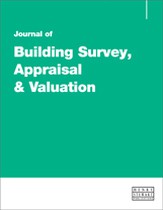Energy Savings Opportunity Scheme: Energy management in large undertakings
Abstract
ESOS emerged from the ‘EU Energy Efficiency Directive’, interpreted into UK ESOS Regulations 2012 with authority to implement dedicated to the Environment Agency. Following Brexit, debate has arisen on ‘why?’ and ‘is it staying?’; announcements from the DCLG/DEEC on EPBD and EEED have confirmed so in its current form. The round one deadline for Large Undertakings to complete an ESOS process or assessment occurred on 5 December 2015, with several extensions for different circumstances. Reflecting on the process and the differing elements of Buildings, Transport and Process to provide direction on the next round in 2019 is essential for understanding and consensus on the correct methodologies for energy benchmarking and EnMS (Energy Management Systems). The actual outcome in terms of compliance levels is stated and the perceived success discussed. What has effectively been created is the need for post-occupancy analysis to be undertaken across industry, which is only set to expand, with future quantifiable and targeted improvement levels set to come into practice.
The full article is available to subscribers to the journal.
Author's Biography
James Cutter is a Senior Environmental Surveyor, whose work over the last 15 years has focused on the energy improvement in the built environment and post-occupancy analysis. In 2009 he formed E-First Surveyors Ltd with a focus on the implementations of standards under EU Energy Directives and the regulations emanating from the Climate Change Act 2008.
Citation
Cutter, James (2016, September 1). Energy Savings Opportunity Scheme: Energy management in large undertakings. In the Journal of Building Survey, Appraisal & Valuation, Volume 5, Issue 2. https://doi.org/10.69554/NIJE8489.Publications LLP
